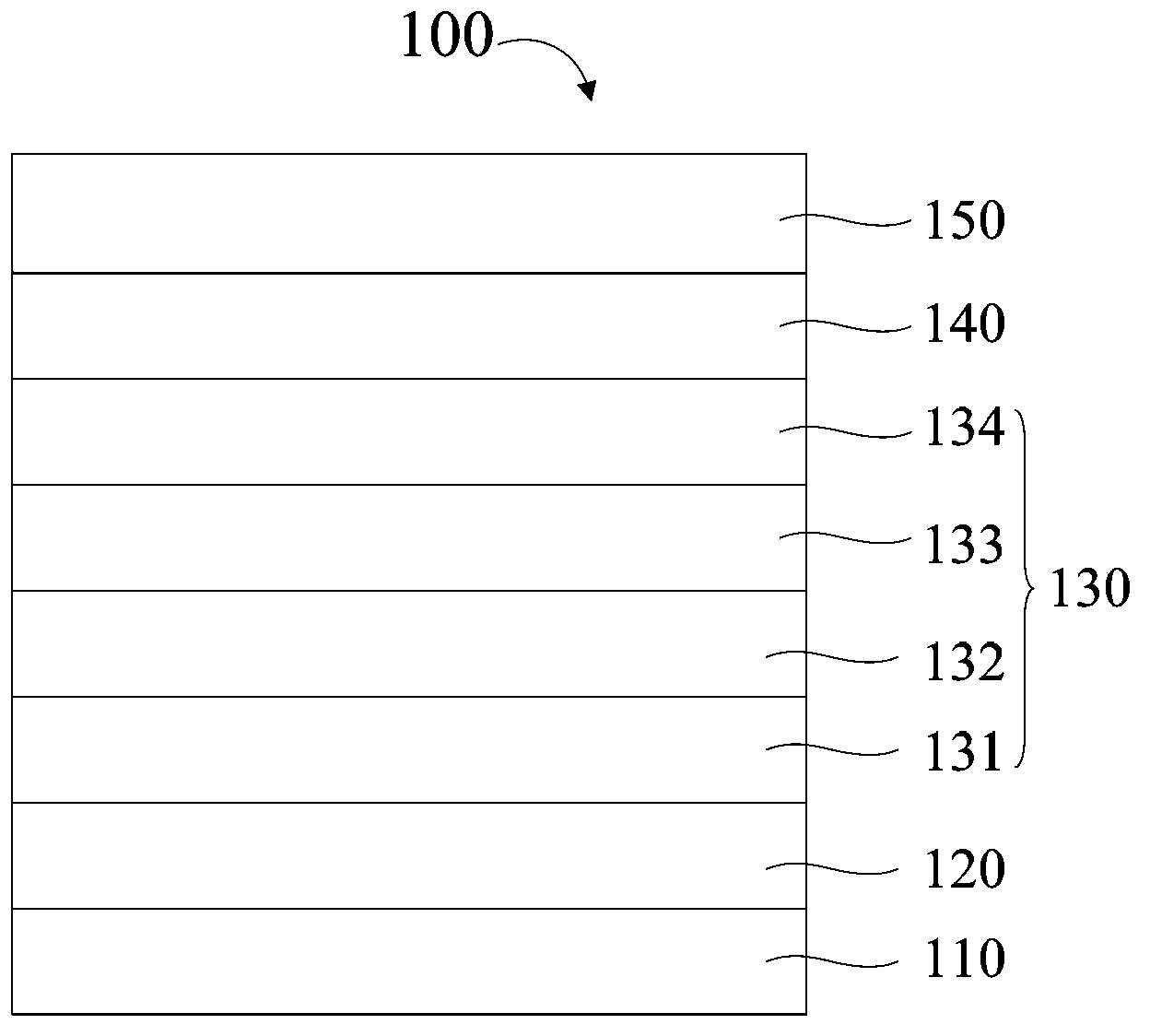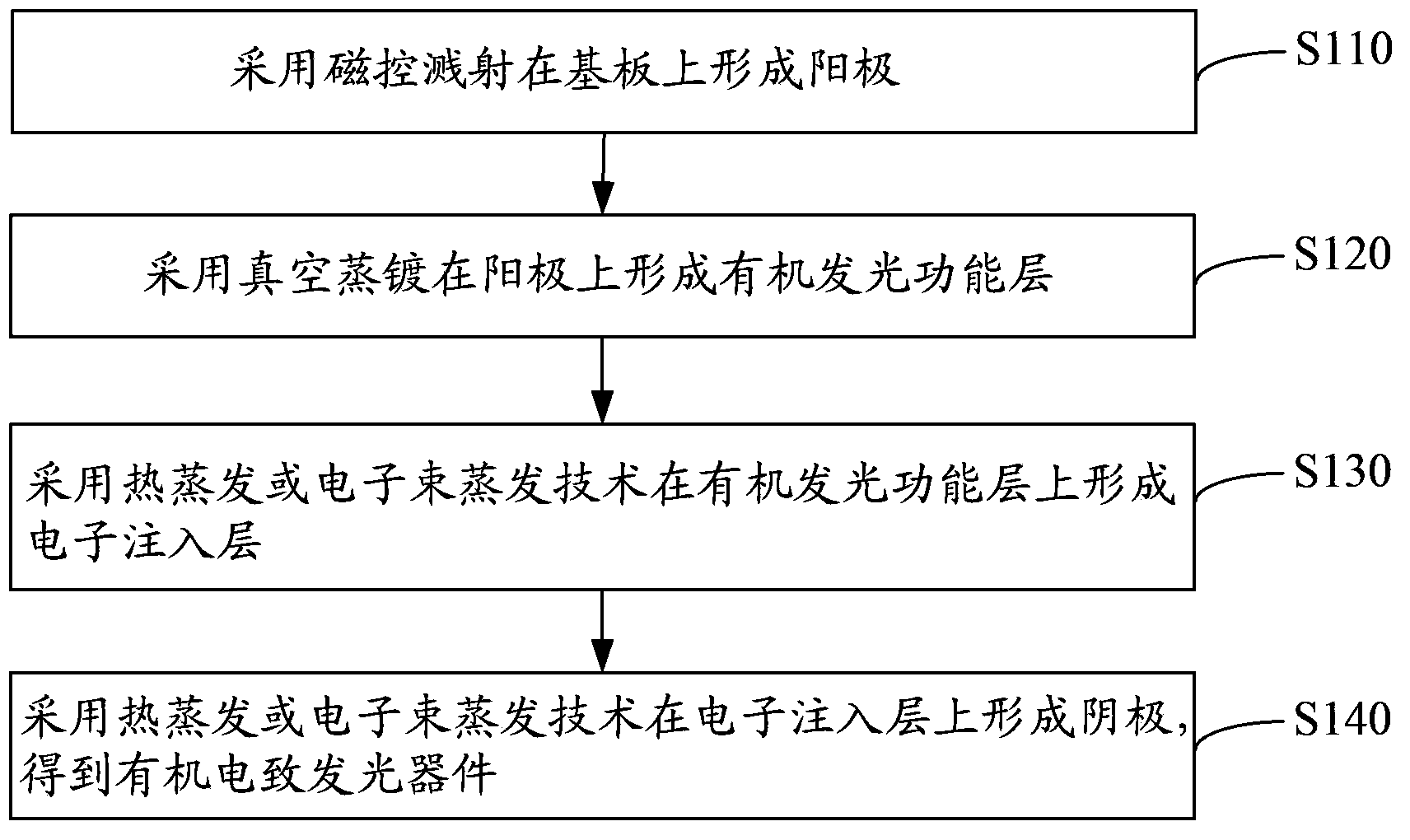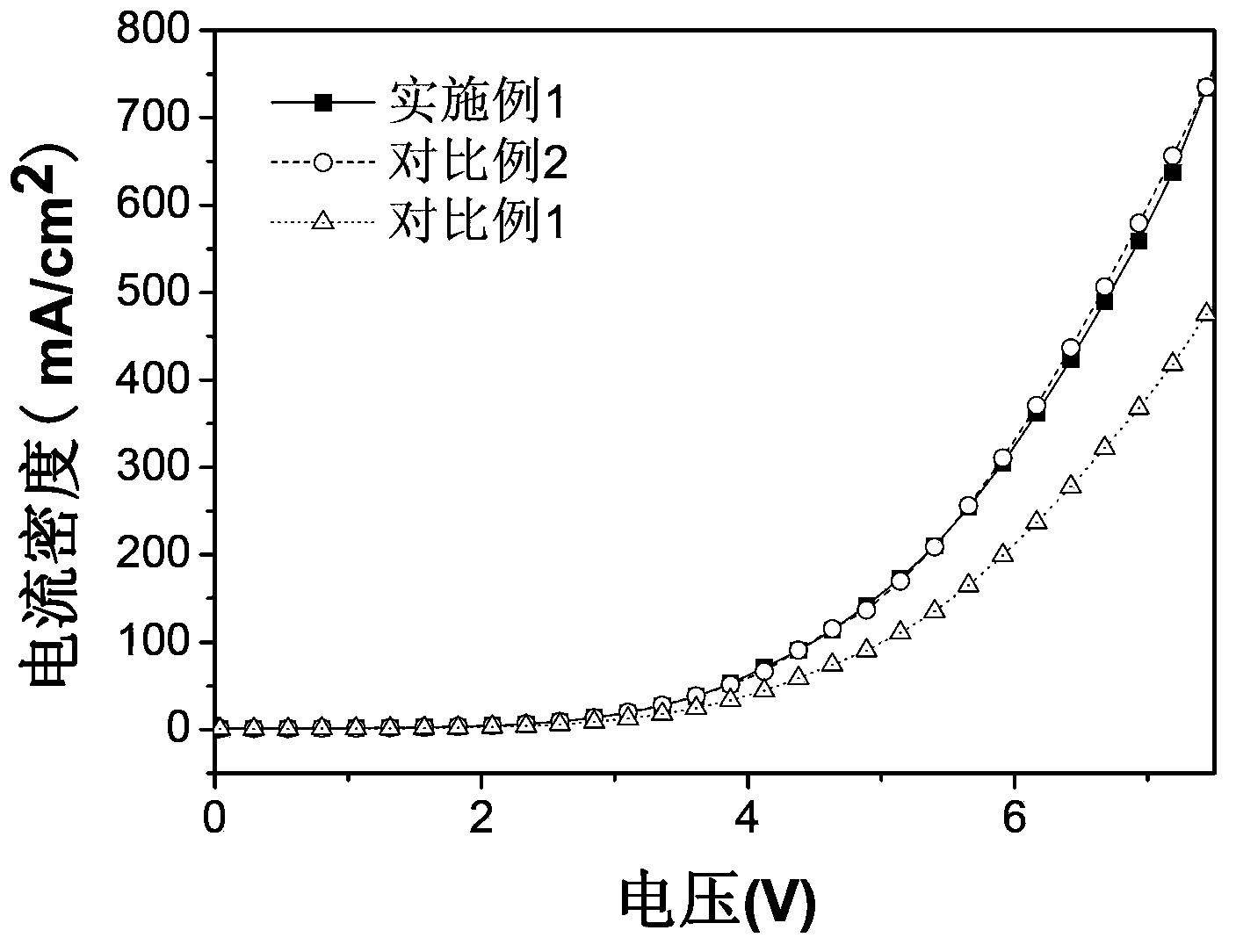Organic electroluminescence device and manufacturing method of organic electroluminescence device
An electroluminescent device and luminescent technology, which is applied in the manufacture of organic semiconductor devices, electric solid devices, semiconductor/solid devices, etc., can solve the problems of low luminous efficiency of light emitting devices, unstable performance of light emitting devices, and easy reaction with water and oxygen, etc. problems, achieve excellent electron injection performance, avoid adverse effects, and achieve high luminous efficiency
- Summary
- Abstract
- Description
- Claims
- Application Information
AI Technical Summary
Problems solved by technology
Method used
Image
Examples
preparation example Construction
[0058] see figure 2 , the preparation method of the organic electroluminescent device of an embodiment, comprises the following steps:
[0059] Step S110: forming an anode on the substrate by magnetron sputtering.
[0060] The substrate adopts transparent glass or polyethersulfone resin substrate.
[0061] Firstly, the substrate is cleaned to prevent the pollutants on the substrate from adversely affecting the performance of the organic electroluminescent device. Place the substrate in deionized water containing detergent for ultrasonic cleaning. After cleaning, treat it with isopropanol and acetone in ultrasonic for 20 minutes, then dry it with nitrogen, and set it aside.
[0062]A metal thin film is formed on a dry and clean substrate by magnetron sputtering to obtain an anode. The material of the anode is indium tin oxide (ITO), indium zinc oxide (IZO), aluminum zinc oxide (AZO) or gallium zinc oxide (GZO). The thickness of the anode is 100 nm.
[0063] Step S120: For...
Embodiment 1
[0092] The structure is: Glass / ITO / CuPc / NPB / Ir(MDQ) 2 (acac):NPB / TPBi / Ba(OH) 2 : Al / Al Organic Electroluminescent Devices
[0093] The preparation method of the organic electroluminescent device is as follows:
[0094] (1) Provide transparent glass as the substrate, denoted as Glass. Put the transparent glass in deionized water containing detergent for ultrasonic cleaning. After cleaning, use isopropanol and acetone in ultrasonic treatment for 20 minutes, and then blow dry with nitrogen;
[0095](2) An anode is formed on the substrate by thermal evaporation. The material of the anode is indium tin oxide (ITO), and the thickness of the anode is 100 nanometers. After preparing the anode, put the anode laminated on the surface of the transparent glass into the plasma treatment chamber for 10 minutes;
[0096] (3) A hole injection layer is formed on the anode by vacuum evaporation. Vacuum degree is 5×10 -4 Pa. The material of the hole injection layer is copper phthalocyani...
Embodiment 2
[0103] The structure is: Glass / ITO / ZnPc / α-NPD / DCJTB:Alq 3 / PBD / Ba(NO 3 ) 2 / Yb organic electroluminescent devices
[0104] The preparation method of the organic electroluminescent device is as follows:
[0105] (1) Provide transparent glass as the substrate, denoted as Glass. Put the transparent glass in deionized water containing detergent for ultrasonic cleaning. After cleaning, use isopropanol and acetone in ultrasonic treatment for 20 minutes, and then blow dry with nitrogen;
[0106] (2) An anode is formed on the substrate by thermal evaporation. The material of the anode is indium tin oxide (ITO), and the thickness of the anode is 100 nanometers. After preparing the anode, put the anode laminated on the surface of the transparent glass into the plasma treatment chamber for 10 minutes;
[0107] (3) A hole injection layer is formed on the anode by vacuum evaporation. Vacuum degree is 5×10 -4 Pa. The material of the hole injection layer is zinc phthalocyanine (ZnPc...
PUM
| Property | Measurement | Unit |
|---|---|---|
| Thickness | aaaaa | aaaaa |
| Thickness | aaaaa | aaaaa |
| Thickness | aaaaa | aaaaa |
Abstract
Description
Claims
Application Information
 Login to View More
Login to View More - R&D
- Intellectual Property
- Life Sciences
- Materials
- Tech Scout
- Unparalleled Data Quality
- Higher Quality Content
- 60% Fewer Hallucinations
Browse by: Latest US Patents, China's latest patents, Technical Efficacy Thesaurus, Application Domain, Technology Topic, Popular Technical Reports.
© 2025 PatSnap. All rights reserved.Legal|Privacy policy|Modern Slavery Act Transparency Statement|Sitemap|About US| Contact US: help@patsnap.com



